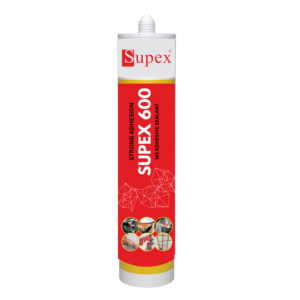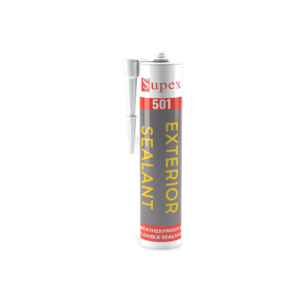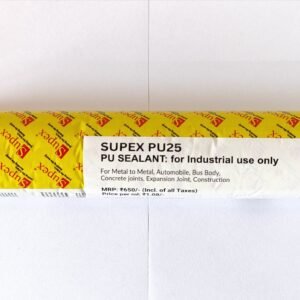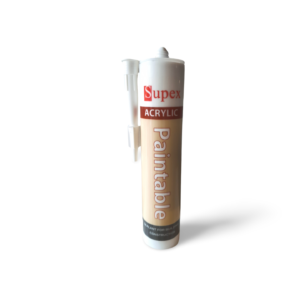Crack filler for exterior walls
Need for Crack filler for exterior walls are specially formulated products designed to repair and seal cracks in the surfaces of outdoor structures. They provide a durable, weather-resistant solution to restore the appearance and integrity of your walls.
TYPES OF WALL CRACKS
Wall cracks fall into three main categories:
- Interior wall cracks such as cracks in the plaster wall or gyproc;
- Exterior wall cracks such as cracks in the brickwork, surface or rendering of external walls;
- Cracks in foundation walls.
All three can be serious and symptomatic of structural failure. How serious the problem is can really only be assessed by looking at:
- The location of the wall crack;
- Whether it is a jagged, horizontal or vertical wall crack;
- Whether there is separation in the materials used to construct the wall or separation of the wall from the framework;
- What caused the wall crack;
- Whether that cause is ongoing and/or whether there is likely to be a recurrence.
Gaping cracks are a good indicator of a serious structural problem. Zig-zag cracks or stair-step cracks following the mortar line in the brick walls of your property may point to a structural defect in your property.
The problem might be particularly serious if you have a complete separation in the mortar or cement between bricks. If you can see through a crack or if a broken brick is able to be wiggled or removed, it’s definitely time to call the experts as a matter of priority.
OAAP
Observation: Cracks
Analysis : Root cause of crack formation
Action Plan: How to seal the cracks against water leakage and ensure it doesn’t repeat.
CAPA: Corrective Action, Preventive Action
Fix those cracks today! Choose a high-quality crack filler for exterior walls and restore your home's strength and appearance.
Contact us
Click for us to respond quickly. Call/ Whatsapp: +91 9699892782
Click HereWHAT CAUSES CRACKS ON INTERNAL WALLS?
Small hairline cracks in plaster walls can be purely cosmetic and caused by the slight contraction and expansion of the wood framing of the house during seasonal changes. Other cracks in internal walls may be indicators of more serious underlying issues such as subsidence, poor initial design or structural and foundational defects as discussed further below.
WHAT CAUSES HORIZONTAL CRACKS IN BUILDINGS?
While fine hairline horizontal cracks in plaster may be due simply to shrinkage in the plaster, other horizontal cracks are more serious. Horizontal cracks in the wall identified during a building inspection are commonly caused by unbalanced soil pressure on concrete block foundation walls. Other horizontal cracks in walls may be caused by the pressure of a failing wall or indicative of load bearing problems and are a safety concern.
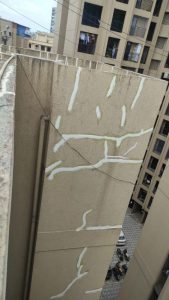
THE CAUSES OF WALL CRACKS
Tracking down the cause or causes of wall cracks is the first step in making any assessment as to the seriousness and cost of repairing wall cracks. Likely causes might include some of the following.
SETTLING AND SUBSIDENCE
Disturbed soil will become compacted and settle over time, causing a wall to crack. This process can take months or even years to occur. Natural settling will often cause narrow vertical cracks as opposed to big jagged cracks.
Minor settling is a normal process that occurs over time. However, significant downward motion in the soil (subsidence) under a wall may create structural faults. Significant subsidence can occur when soil is washed away (for example through a gradual leak or sudden flooding), compacts too much or collapses. Sink holes are a dramatic example of this.
CLIMATE AND SEASONAL CHANGES
Climate and seasonal changes, such as drought and flood, can cause dramatic contraction and expansion of the soil or changes in the water table far below a property leading to wall cracking.
EXCAVATION AND CONSTRUCTION WORKS IN YOUR AREA
The use of heavy machinery, vibration, excessive mechanical compaction of the soil or blasting (the use of explosives to excavate) can all cause your walls to crack.
POOR INITIAL DESIGN OR POORLY-CONSTRUCTED EXTENSION WORK
Wall cracking can also occur in circumstances where your property or part of it (eg. an extension) has been poorly-designed or constructed. Too much weight on a load-bearing wall can contribute to wall cracks. Inferior, flawed or faulty building materials or under engineered footing design can also contribute to the emergence 0f wall cracks.
WATER DAMAGE
Blocked gutters, flood damage, garden sprinklers, blocked or leaking pipes can all cause wall cracks and they can have the effect of saturating or even washing away soil.
TREES IN CLOSE PROXIMITY TO THE PROPERTY
Trees often have invasive root structures that can also contribute to wall cracking. You should ensure that you do not have anything other than small shrubs or bushes in close proximity to your walls. Aside from destructive roots, trees can also contribute to wall cracking by removing water from the soil and affecting the soil’s moisture content.
DEGRADATION OF BUILDING MATERIALS
Nothing lasts forever, and building materials are no exception to that rule. Gravity, weathering, rotting or poor maintenance can all take their toll on building materials. When a building material starts to degrade, its structural integrity might be undermined, causing it to succumb to gravity. This can cause wall cracks to appear. Concrete cancer is another possible culprit of wall cracking. This occurs when the steel reinforcements in concrete start to rust and degrade following exposure to moisture and salt.
How to repair wall cracks
There are many options for repairing wall cracks. It’s relatively easy to hide wall cracks if they are hairline cracks. Minor cracking that is purely cosmetic can be repaired or sealed with filler and paint.
However, if your wall cracks are caused by an underlying structural defect then repairs can be much more costly, time-consuming and inconvenient. The repair process may include:
- Reblocking or restumping: This involves replacing the deteriorating steel, concrete or timber stumps with new stumps where the original stumps may have rotted or been attacked by termites or succumb to corrosion damage.
- Levelling and underpinning: Underpinning means stabilizing your house footings. This process can involve having your foundations excavated and new concrete poured or injected into the site or underneath a foundation wall so as to bring it up to its original level.
- Demolition and reconstruction: In some extreme cases, the dismantling and rebuilding of a wall may be the best solution to address the causes of wall cracking where there is a serious underlying structural defect.
Sealing existing wall cracks with crack filler sealant:
- Internal cracks: open the crack with a grinder, clean the area thoroughly, apply Supex 500 acrylic sealant, finish using water, after drying paint as per colour requirements.
- External Wall cracks/ Terrace cracks: open the crack with a grinder to make a V groove, clean the area thoroughly, apply Supex PU 25 polyurethane sealant, after drying paint as per colour requirements.
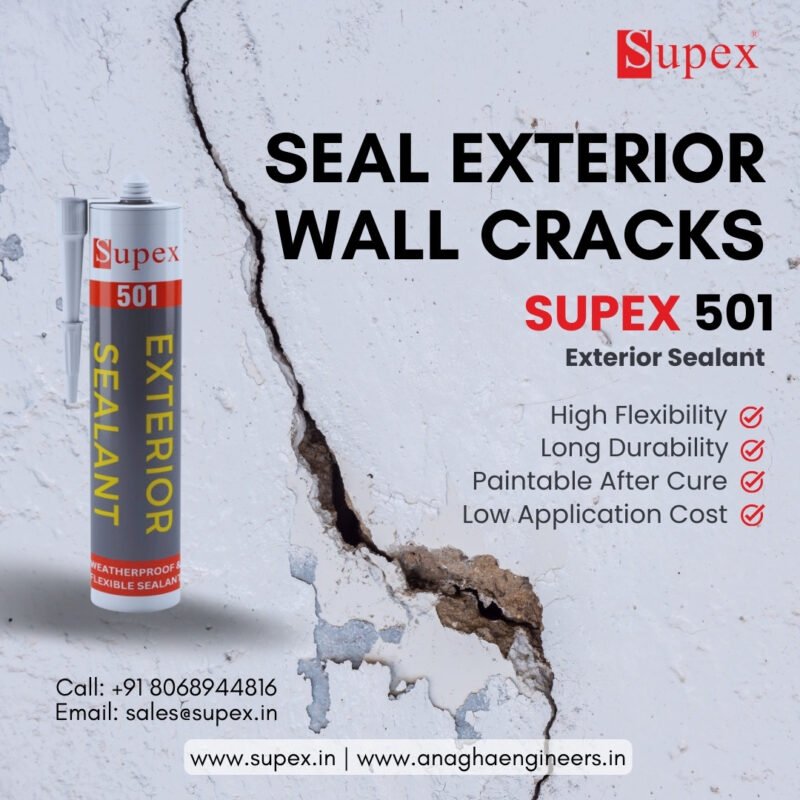
Internal cracks on wall, POP, gap filling
Plz call us / Whatsapp at 9833892782 for technical or commercial queries.
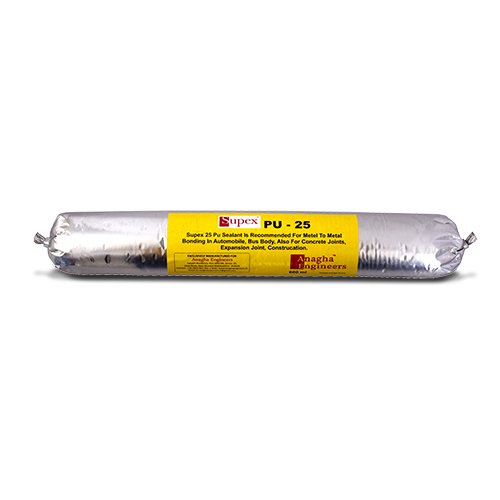
Buy crack filler for external cracks, waterproofing
Plz call us/ Whatsapp at 983389282 for technical or commercial queries

